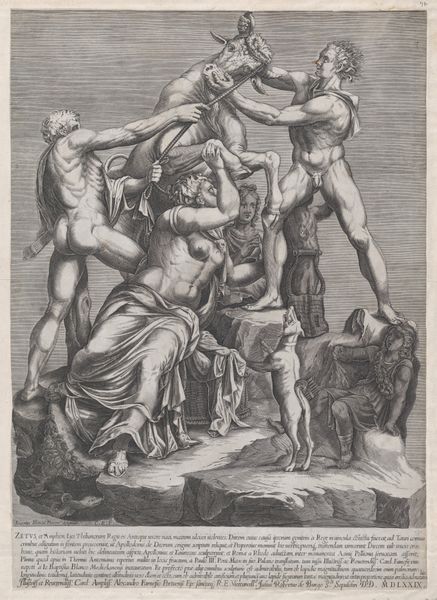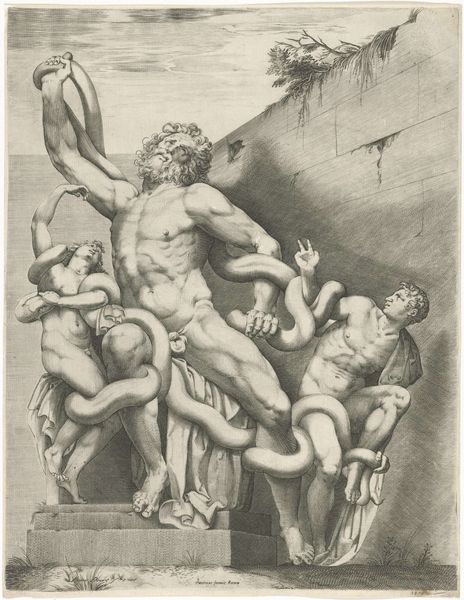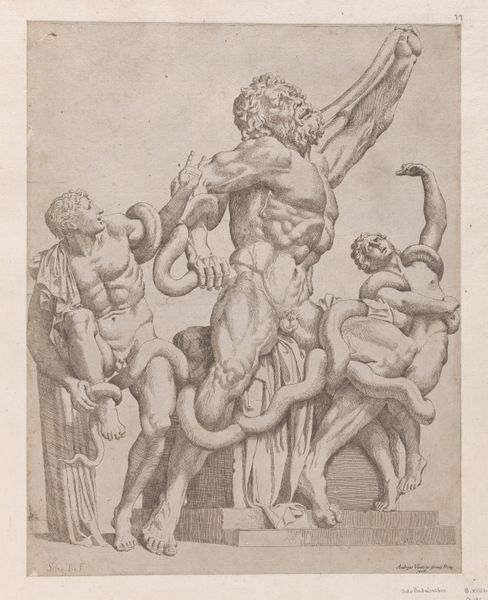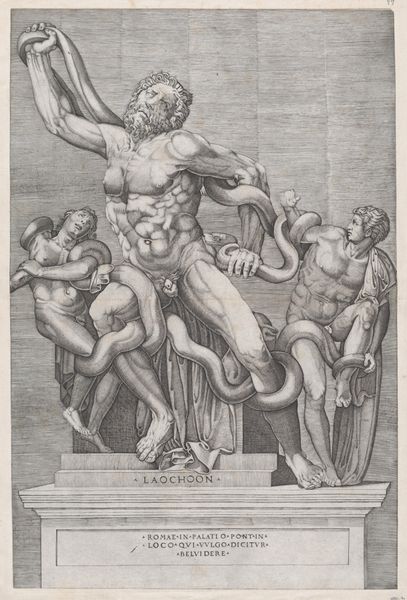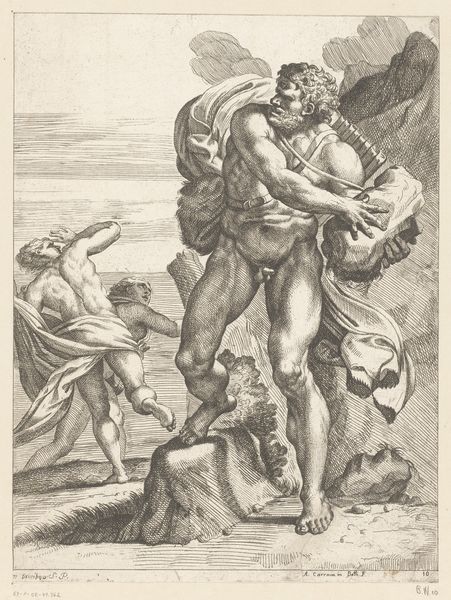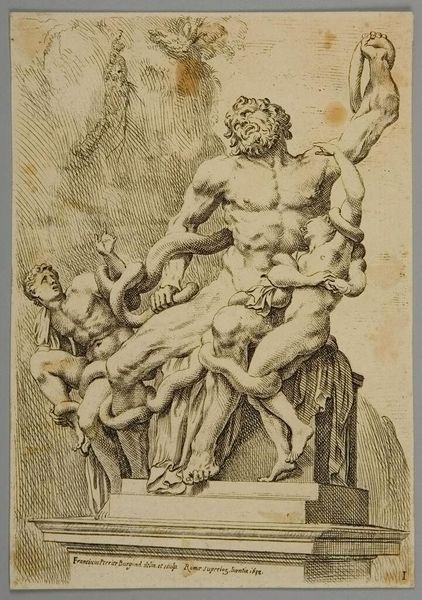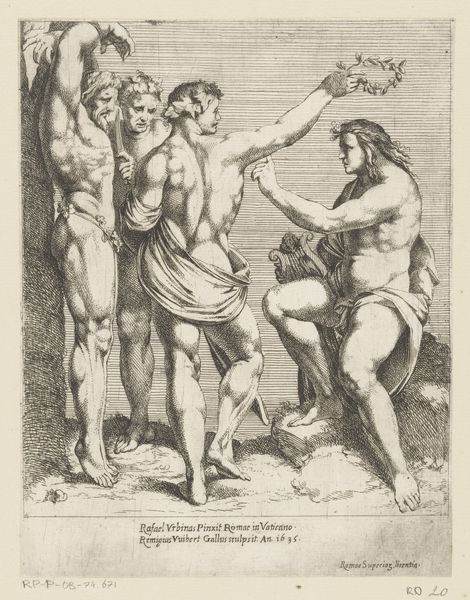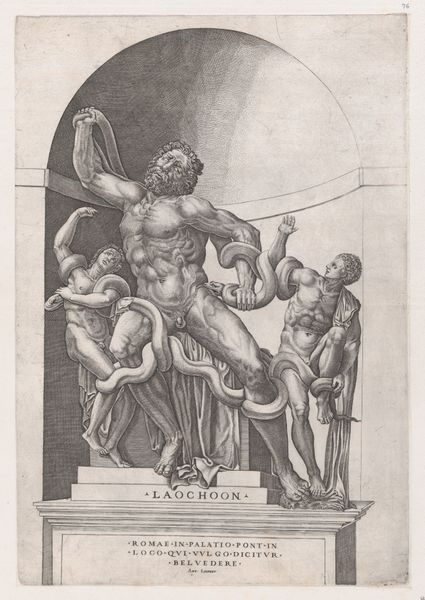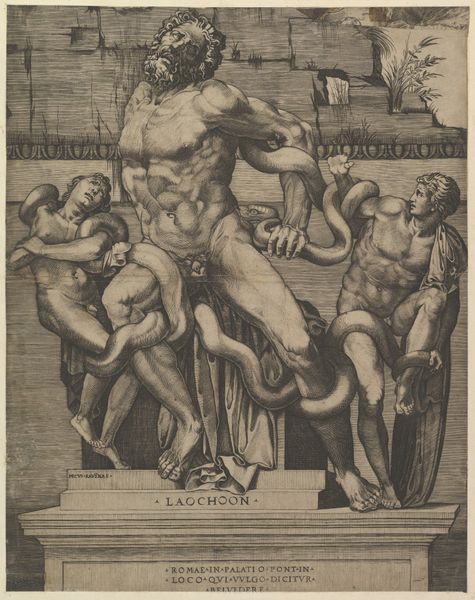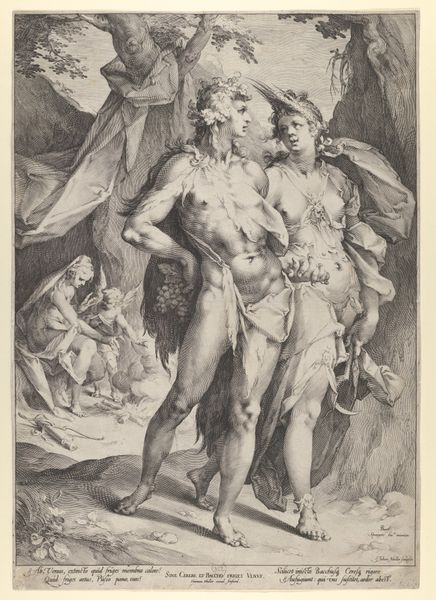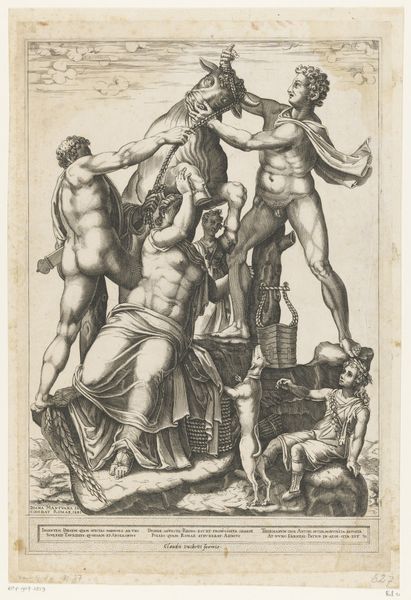
drawing, print, engraving
#
drawing
#
baroque
# print
#
classical-realism
#
figuration
#
form
#
line
#
history-painting
#
nude
#
engraving
Dimensions: height 232 mm, width 172 mm
Copyright: Rijks Museum: Open Domain
Curator: Here we have an engraving by Jan de Bisschop, "Laocoon en zijn zonen," dating from after 1663. Editor: What a powerful, unsettling image. The dynamism! The texture of the hatching creates a real sense of writhing, claustrophobic energy. Curator: Indeed. Bischopp has masterfully captured the baroque aesthetic. Note how he employs strong diagonals and dramatic foreshortening. This imbues the print with movement, pulling the eye ineluctably to the agonized faces of Laocoon and his sons. Editor: It's terrifying. Snakes, of course, are so heavily laden with symbolism. Betrayal, venom, transformation. What do they signify here? Is this a broader commentary on the human condition? Curator: Certainly, the serpent in Western iconography often represents deception and primordial chaos, evoking a fall from grace. This image refers directly to the classical sculpture. Virgil recounts how Laocoon warned the Trojans against accepting the wooden horse, angering Apollo, who sent the serpents to punish him. Editor: So the snakes embody divine wrath, literally constricting and suffocating Laocoon for speaking truth to power. The repetition of serpentine forms contributes significantly to the piece's overwhelming sense of dread and entrapment. Curator: Precisely, consider also the technical virtuosity of Bischop. See how through meticulous lines and shading, he modeled form with stunning accuracy while also conveying emotional distress. Notice also that Bischop’s classical style is reminiscent of line work from Northern Renaissance engravers like Durer. Editor: Seeing this engraving reminds me how artists throughout history grapple with the problem of evil and unjust suffering, which are conveyed through symbols that carry intense psychological weight across centuries. Curator: The interplay of line and form truly communicates a potent warning from classical mythology. The print resides here in the collection of the Rijksmuseum today. Editor: Reflecting on this work leaves me with an unsettled appreciation for Bischop’s technical brilliance.
Comments
No comments
Be the first to comment and join the conversation on the ultimate creative platform.
